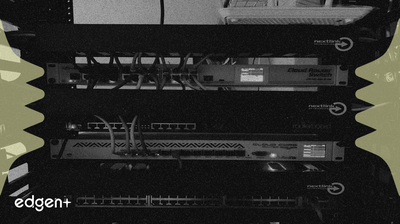Related News

U.S. Non-Farm Payrolls Beat Expectations in September; Unemployment Rate Rises to 4.4%
## Executive Summary The latest U.S. labor market report presents a mixed economic picture, with non-farm payrolls for September showing a job gain of 119,000, substantially exceeding the consensus forecast of 51,000. However, this sign of labor market strength was contrasted by a separate household survey showing the unemployment rate rising to 4.4%, a four-year high and slightly above the 4.3% that economists had anticipated. ## The Event in Detail According to data from the U.S. Bureau of Labor Statistics, the 119,000 increase in non-farm payrolls marked a significant acceleration from the prior month's revised figures. This headline number defied widespread expectations for more moderate job growth. Alongside the employment figures, average hourly wages registered a modest increase of 0.2%, a critical data point in assessing inflation trends. Contradicting the payroll data, the unemployment rate ticked up from 4.3% in August to 4.4% in September. This increase suggests that despite robust hiring in certain sectors, more individuals were actively seeking work but unable to find it, pointing to potential underlying slack in the labor market. ## Market Implications The conflicting data points introduce significant uncertainty for financial markets and Federal Reserve policy. A stronger-than-expected job creation figure typically supports a more hawkish monetary policy stance, as it suggests the economy can withstand higher interest rates. It can be viewed as a positive indicator for economic resilience. However, the simultaneous rise in the unemployment rate complicates this interpretation. It provides ammunition for officials who may advocate for a more cautious or dovish approach, arguing that the labor market is not as tight as the headline payroll number would suggest. This ambiguity may lead to increased volatility as investors recalibrate their expectations for future interest rate decisions. ## Expert Commentary Wall Street economists had largely projected a more subdued figure, with a **Reuters** survey showing an expected increase of only 50,000 jobs. The significant beat on the headline number caught many market participants by surprise. However, some analysts urge caution, noting that initial payroll reports are often subject to substantial future revisions. The initial estimate for benchmark revisions already suggested that job growth in the prior year was weaker than first reported, implying that a single month's data should be interpreted with care. ## Broader Context This jobs report arrives at a crucial moment for the **Federal Reserve**, which is navigating its dual mandate of maintaining price stability and achieving maximum employment. The data offers no clear resolution. While robust job growth could be interpreted as fuel for inflation, a rising unemployment rate signals the opposite. As a result, future monetary policy decisions will likely depend heavily on incoming inflation data to resolve the ambiguity presented by this complex labor market report. The market will now watch for commentary from Fed officials to gauge how they interpret these mixed signals.

Vanke Reports $2.3 Billion Q3 Loss; Secures CNY 30.8 Billion in Shareholder Loans
## Executive Summary **China Vanke Co. Ltd.** (**000002**) is navigating severe financial turbulence, reporting a net loss of 16.1 billion yuan ($2.3 billion) for the third quarter of 2025. In response to mounting liquidity pressure, its largest shareholder, the state-owned **Shenzhen Metro Group**, has provided loans amounting to 30.8 billion yuan ($4.3 billion) year-to-date. However, recent demands for collateral on these loans signal a significant tightening of financial conditions, raising concerns about the stability of one of China's leading property developers. ## The Event in Detail The Shenzhen-based developer's Q3 financial statements revealed a deepening crisis. The reported net loss of 16.1 billion yuan nearly doubled from the same period in the prior year. This was coupled with a 26.61% decrease in revenue, underscoring the impact of a persistent slowdown in property sales. To address its financial obligations, **Vanke** has leaned heavily on its primary shareholder. **Shenzhen Metro Group** has extended a total of 30.8 billion yuan in financing throughout 2025. A recent infusion of 2.2 billion yuan was specifically used to repay a maturing 2.5 billion yuan domestic bond. Critically, this support is no longer unconditional. **Shenzhen Metro** has now requested collateral or pledges for 20.37 billion yuan ($2.86 billion) of its loans, a move that indicates a more stringent and risk-averse approach from its state-owned backer. ## Market Implications The immediate market reaction has been negative, with **Vanke's** bonds reportedly plunging following the news. The demand for collateral from **Shenzhen Metro**, a related and state-owned party, is particularly concerning for investors. It suggests that the perceived risk associated with **Vanke** has escalated to a point where even its most significant supporter is seeking to mitigate its own exposure. This development may have a chilling effect on the broader real estate sector, as it implies that state-backed lifelines may now come with stricter terms that do not fully insulate companies from market pressures. ## Expert Commentary Financial analysts observe that the shift in **Shenzhen Metro's** lending policy is a pivotal moment. The requirement for collateral on existing and future loans is seen as a clear signal of heightened risk assessment. Observers note that while the provision of loans demonstrates continued support, the new terms reflect a pragmatic approach to asset protection, even for state-owned enterprises. The sharp revenue decline is cited by market experts as definitive evidence that the downturn in China's property market continues to challenge even the most established developers, diminishing their capacity to generate operational cash flow. ## Broader Context This event places **Vanke**, once considered a financially robust developer, squarely within the ongoing Chinese property debt crisis. The company's struggle, and the evolving nature of the support from its state-owned shareholder, highlights a new phase in the government's management of the sector-wide deleveraging. The move away from unconditional bailouts toward more structured, collateralized lending may represent a new playbook for managing distress among major developers. This strategy aims to prevent outright collapse while simultaneously imposing a degree of market discipline, a balancing act that will have significant long-term implications for China's real estate and financial markets.

OpenAI's Revenue Surge Fuels AI Infrastructure Boom Amid Power Grid Strain
## Executive Summary **OpenAI's** aggressive revenue growth and infrastructure expansion are validating a prolonged AI capital expenditure cycle. This trajectory signals robust market demand and directly benefits hardware manufacturers and cloud service providers. However, this expansion simultaneously raises critical concerns about the capacity of existing power infrastructure to support this growth. Analysis from major financial institutions and government-backed research indicates that the surge in power demand from AI data centers could create a significant electricity deficit in the coming years, posing a material risk to the sector's development. ## The Financial Trajectory Recent financial disclosures and executive commentary paint a picture of exponential growth for **OpenAI**. The company is projected to exceed an annualized revenue run rate of $20 billion by the end of 2025, a significant increase from previously reported figures. Founder **Sam Altman** has suggested long-term revenue could reach $100 billion by 2029, signaling deep confidence in the commercialization of its AI models. This financial performance is directly funding a massive buildout of what industry analysts term "**AI factories**"—large-scale infrastructure designed for developing and deploying large language models. This strategy entails a significant upfront capital investment, creating a "J-curve" where expenditures currently run far ahead of revenue, with the expectation of substantial future returns. ## Market Implications: The AI Capital Expenditure Cycle The financial momentum of **OpenAI** confirms that the AI capital expenditure cycle is set to continue its intense pace. This trend is a primary growth driver for the broader technology ecosystem, particularly for semiconductor companies providing specialized chips and hyperscale cloud providers offering the necessary infrastructure. The market structure is concentrating revenue among a handful of these "**AI factory**" operators, including **OpenAI**, neoclouds, and major hyperscalers, who are funding the buildout. The vast majority of enterprises are expected to consume AI via APIs from these operators rather than building their own large-scale facilities, further cementing the market position of these dominant players. ## Expert Commentary: Infrastructure Strain and Power Deficits While the AI industry's expansion is unprecedented, its dependency on physical infrastructure, particularly electricity, is emerging as a critical bottleneck. **Morgan Stanley** has issued a stark warning, forecasting that the United States could face a power shortage of up to 20% by 2028, driven almost entirely by the energy demands of AI data centers. This concern is supported by data from **Goldman Sachs Global Investment Research**, which highlights the explosive growth in power demand in data center hubs like Northern Virginia. **Dominion Energy's** forecasts for the region show a steep, unslowing demand curve for electricity. Furthermore, research backed by the Department of Energy projects that annual energy use from U.S. data centers could nearly triple by 2028, potentially consuming up to 12% of the nation's total electricity. ## Broader Context: The Trillion-Dollar Bet on AI Infrastructure The current market dynamics represent a multi-trillion-dollar bet on the future of artificial intelligence. The high capital expenditures are viewed as a necessary, long-term investment to secure a strategic advantage in the AI economy. However, the race for AI dominance is now inextricably linked to securing and developing energy resources. The strain on power grids is no longer a peripheral issue but a central challenge to the industry's growth trajectory. This reality is expected to trigger a new wave of investment, not just in AI hardware and software, but in power generation and transmission infrastructure to support the digital factories of the future.
